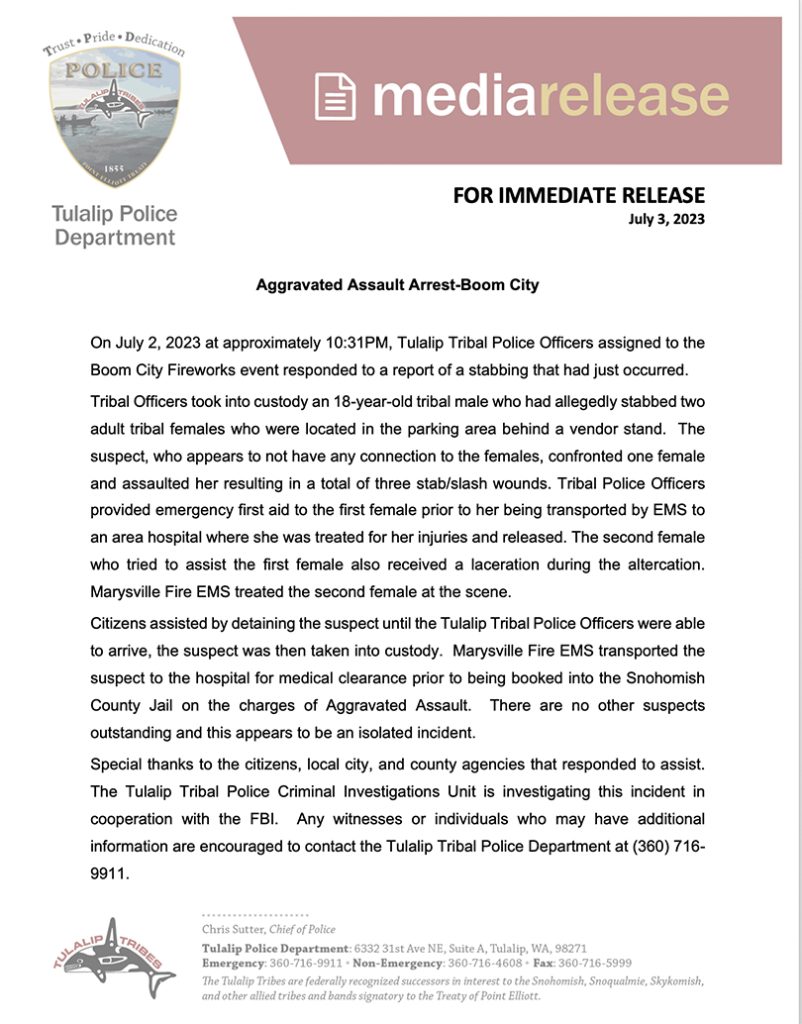Please use the following link to download the July 15, 2023 issue of the syəcəb
Let’s go cedar harvesting
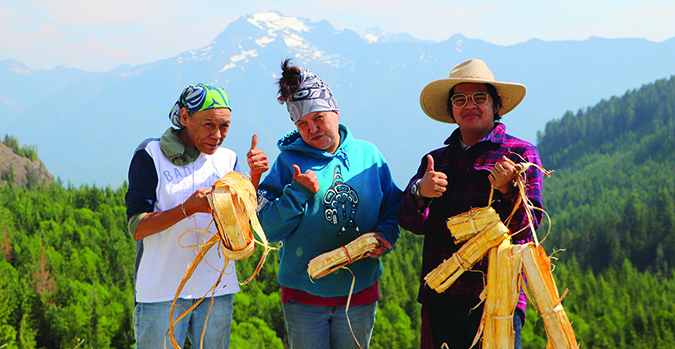
By Wade Sheldon, Tulalip News
Under the radiance of a resplendent Monday morning, Jamie Sheldon, a proud Tulalip native and skilled basket weaver, took off to the mountains. She was accompanied by her dear friend, fellow tribal weaver, Wilma Gloria, along with her beloved granddaughter Maddie. This would be the first of two journeys to the mountains for Jamie. With the car packed, they headed east of Tulalip to the Cascade Mountains to search for some red cedar to harvest for their many pieces of traditional styled baskets, jewelry, and headwear.
“The best time for harvesting red cedar is from the middle of May to the end of June,” Jamie said. “And the best time to harvest yellow cedar is right after red from the beginning of July to the beginning or middle of August depending on the rise in temperature.”
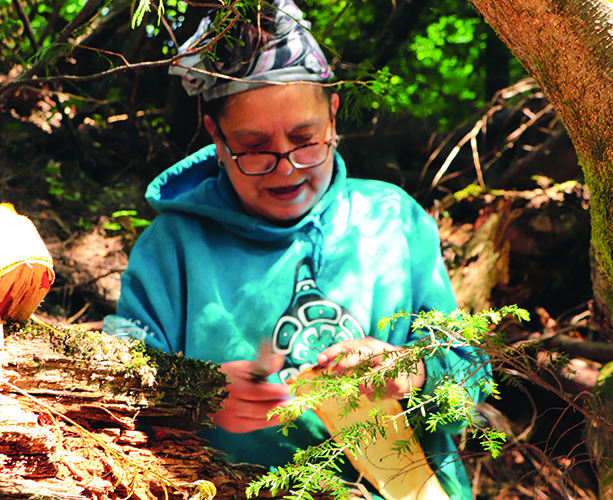
Red cedar has an earlier harvest time as most grow lower in elevation and warm up faster. This causes the sap to separate the inner bark from the outer bark, making it easier to pull strips of bark from the trees. When you cut a piece of bark loose from the tree, then grab it and separate it from the tree, this is called pulling.
“When harvesting cedar, [we] pray and thank the cedar for providing a chance at keeping the native culture alive. It gives us a source for revenue and is very valuable to the Native people,” said Jamie, “You never want to pull all the cedar as it could kill the tree. Pulling one to three strips of cedar, depending on the size and health of the tree is all you need; while also leaving enough protection for the tree to heal itself.”
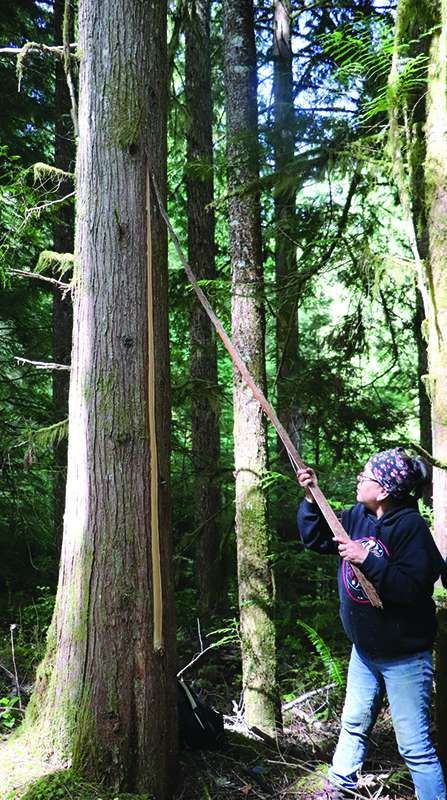
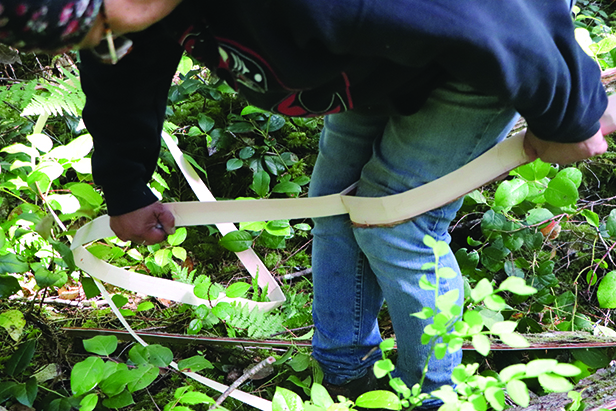
You also want to remember that each strip you pull should only be the width of your palm. After pulling a strip of bark from the tree you need to separate the outer bark from the inner. This can be done with a knife by pushing it through the side of the bark, splitting it, then pulling the two pieces away from each other. Using your knees for leverage can help. When done separating the excess pieces of bark you don’t use, put them under the roots of the tree or buried next to the tree so the micro-organisms from the bark breaking down can go back into the soil to nourish the tree.
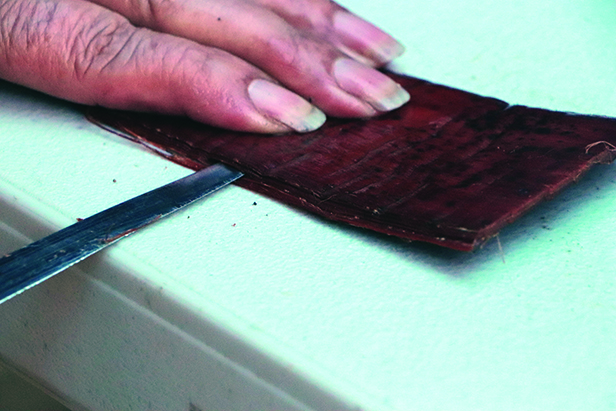
Often times, driving down long gravel roads is how many scour the forests for trees to harvest. The forest rangers would like the people who are harvesting cedar to pull from the opposite side that isn’t facing the road. This is to help keep the forests looking well, while also not letting people know that this is a harvesting area so it can recover and isn’t over harvested. You only want to harvest one to two trees in any area so as to keep the forest healthy.
On her second expedition, Jamie was accompanied by Kaiser Moses, another Tulalip native and cedar weaver. Also joining them again was Jamie’s friend Wilma. The pursuit of yellow cedar proved to be an adventurous undertaking. One that demanded greater patience and a touch more agility, making it a lengthier endeavor than the previous trip.
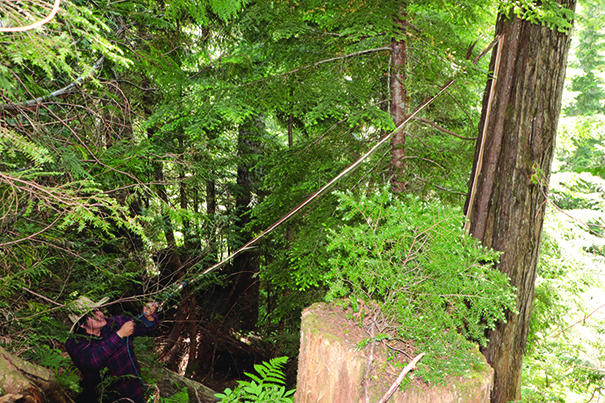
“Looking for yellow cedars can take a whole day’s journey, if you’re lucky,” Jamie said with a smile. “A place where yellow cedars grow can be very sacred to a basket weaver, as it is more difficult to find and attain.” Yellow cedars require a bit more patience, and knowing where to go and what to look for are big factors in locating the right trees.
When looking for yellow cedar, it’s best to start higher in elevation, as yellow cedars grow from around 2,000 to 5,000 feet. They are often located on very steep inclines making pulling, stripping, and gathering quite the task. Yellow cedars can also be tricky as they resemble red cedars. Here are a couple tell-tale signs to look for when locating yellow cedar.
The first thing to note is that the branches are a lot droopier and aren’t parallel to each other. Many of the branches are bendy and the leaves hang down toward the ground. The bark is also very different as you can grab the outside bark and peel it off fairly easily. When you pull yellow cedar, as it dries and becomes more yellow, it can take a little longer than red cedar to dry.
After gathering your cedar there are a few important steps to ensure it stays clean and free from mold and other elements that may damage your cedar, like moisture or sunlight.
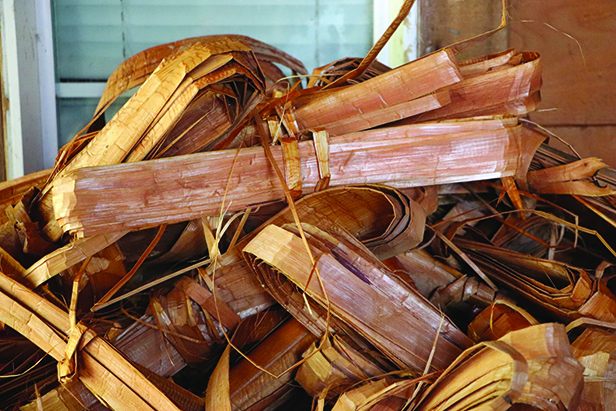
“Right when you get home from harvesting, it is of the upmost importance that you hang your cedar,” said tribal weaver, Anita Sheldon. “You want your cedar to be completely dry before storing it. When storing it, you must make sure it is in a dry area, using a container with a lid and putting a jar or cup of open baking soda to help trap any moisture that may get into your area or container.”
When you feel like you want to use your cedar, you must soak it until it becomes flexible. This could take a couple of days so prepare beforehand if you have a need or want to create something. Depending on the size and item you are creating, each piece of cedar can be separated multiple times to create the desired width you want your creation to be.
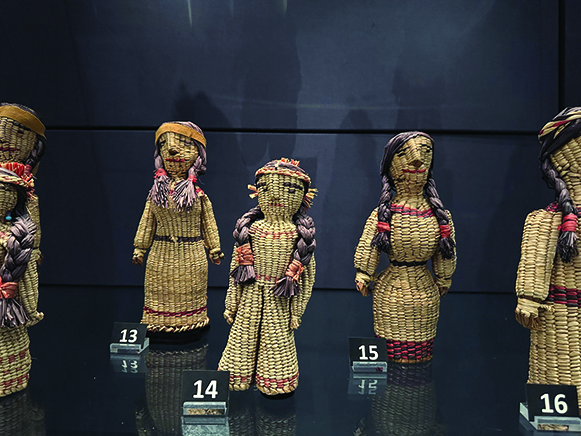
Anita shared, “Knowing what our ancestors did, and the many uses cedar had, for everything from cooking to diapers for the baby. For their bedding and enclosures for their rooms in the longhouse, shawls, skirts, men used them for pants and hats. Cedar was a way of living for all our ancestors, and it’s a beautiful material to work with.”
Traditionally, cedar has been used for a wide variety of items, such as water tight baskets, baskets for berry picking, or even catching fish, clothing, and dolls for children to play with. Cedar is sacred to the Coast Salish people and continues be used in many ways, keeping the sacred traditions alive and going strong.
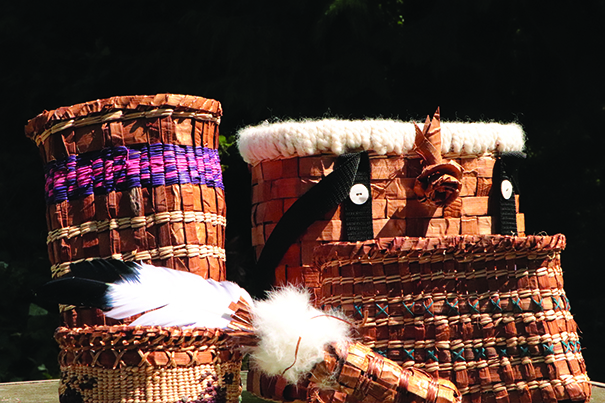
“It’s very important to harvest cedar, because it is a cultural activity,” expressed Kaiser. “Anytime something is cultural, it helps me heal from the stresses of life. It also helps me stay grounded to the earth and stay happy. I keep the cedar in a sacred place. When it’s ready, I am going to use the cedar for traditional regalia pieces to gift to my family.”
If you want to learn more about cedar harvesting, creating cedar baskets, and jewelry, Jamie teaches classes on Wednesdays, 5:00-7:00 p.m. at the Hibulb Cultural Center. For more info, visit hibulbculturalcenter.org.
College graduates honored for their commitment to education and bettering their community
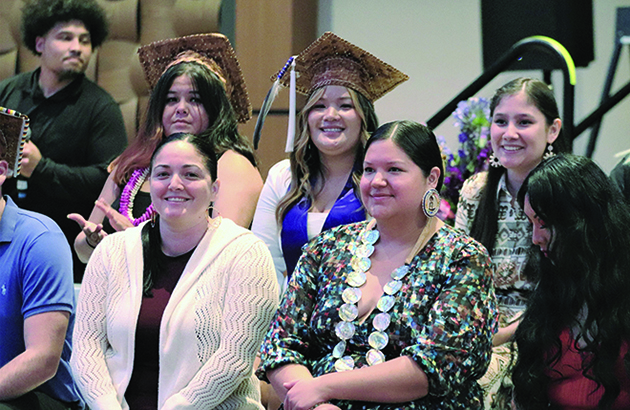
By Micheal Rios, Tulalip News
Every time a Native American graduates from a university, community college, or vocational school, they instantly become the living embodiment of what it means to reclaim a narrative. For so long, our people were shut out of academic environments where they could share their truths while embodying the vibrant traditions and teachings of their still thriving Native culture.
Compound those generational barriers to equitable education access with the unfortunate truth that when it comes to Native America and education, the dominant narrative says we can’t succeed in the westernized education system. United States census data supports this misbegotten notion by showing that while more than 65% of American high school students attend college, just 19% of Native students continue their education after high school. In an age where education is a critical cornerstone for self-sufficiency and quality of life, only a bleak 13% of tribal citizens age 25 and older hold a college degree.
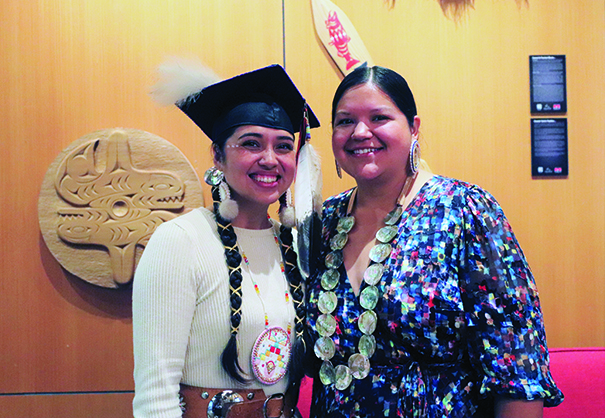
Yet, there is much reason for the next generation to be optimistic about achieving any dreams they may have of one day walking across a collegiate graduation stage and proudly accepting their Associate’s, Bachelor’s, Master’s, or Doctoral degree. Because the educated Native narrative is being reclaimed and rewritten by present-day Indigenous scholars who are actively working to decolonize education pathways, not just for themselves but for future generations as well.
That reclamation process was on full display on the evening of June 22, as forty-two proud Tulalip scholars were celebrated for their commitment to higher education and, in the process, breaking the erroneous, often-cited stereotype that Natives can’t succeed on the collegiate level.
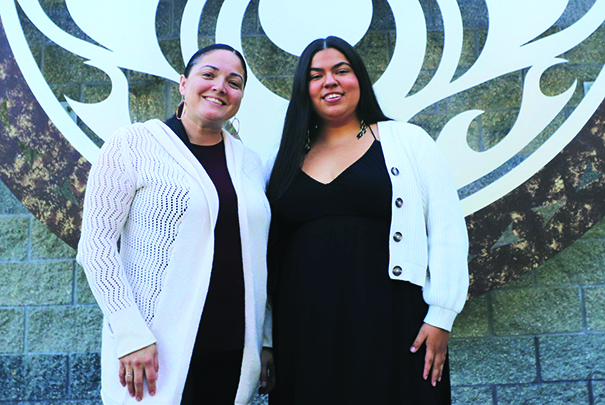
“You’ve all put in so much hard work and countless hours of studying to earn your degrees. We are so proud of you for choosing to better yourself, your community, and your future through education,” said Chairwoman Teri Gobin during her opening remarks. “As a tribe, we know we need to be better at utilizing your brilliant minds and supporting our college graduates. As we continue to grow our business operations and evolve as a tribal government, we want you to feel welcome to build a career with us.”
It was a powerful moment as the words washed over the graduates as they sat with their support system of family and friends in the Tulalip Resort’s Orca Ballroom. Hopefully, many of the graduates will consider finding their place within Tulalip’s vast enterprise that grows larger every year.
For some of the graduates, they are already working diligently to carve out a meaningful role in their traditional homelands. Two such examples are homegrown products, Malory Simpson and Tisha McLean. Both proud mothers managed to balance a busy home life with multiple kids and full-time jobs with their Tribe (Malory is the Events Manager and Tisha works in the Board office), with a steady diet of college coursework. For their immense efforts, Malory received a Bachelor of Arts degree from Northwest Indian College, while Tisha earned her Master’s degree from the University of Arizona.
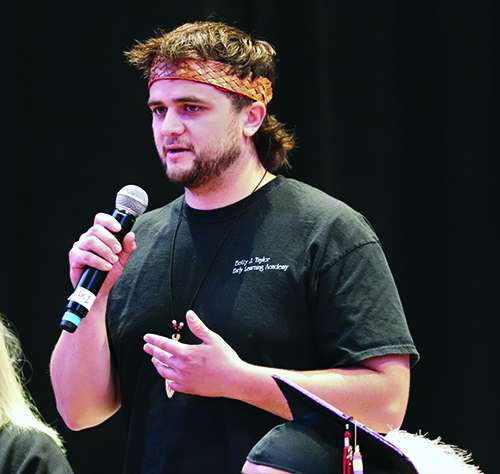
“My grandmother Dawn Simpson proved to me it’s never too late to go back to school when at the age of 61, she graduated with her Master’s degree. She inspired me as a single mother to go back to school in my 30s and to keep pushing no matter the struggle in order to be here today and graduate with my 19-year-old daughter, Shylah,” shared Malory. Her daughter participated in running-start as a high schooler, which gave Shylah the opportunity to finish her A.A. only one year after graduating high school. “As the mother of four kids, it was always a goal of mine to graduate college so I could set a positive example for them. As proud as I am to be here today, I’m even more proud of my two oldest girls, who will both be attending the University of Washington next year. Together.”
“I started my educational journey because I wanted to set the bar for my kids and my little sister,” added Tisha. “With six kids at home, it’s definitely been challenging. I can’t thank my husband enough for taking care of our children while I’m in the books for 20 hours a week.” Shortly after receiving her Master’s degree, Tisha accepted a position as a legislative assistant to the Tulalip tribal council.
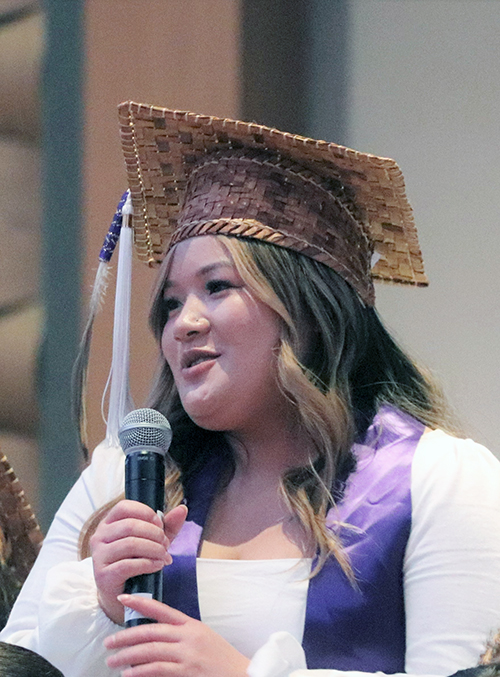
Another shining example of Tulalips striving to reclaim the education narrative is 27-year-old Kali Joseph. She has overcome many barriers while remaining steadfast in her commitment to bettering herself and her community. Now, she’s a graduate of the University of Washington and intends to expand her role in empowering those most in need as the Manager for Tulalip’s Recovery Resource Center, which opened earlier this year.
“I really want to say thank you to the generations who came before us. They really paved the way for us to be here. Our great-great-grandmothers are so proud of us,” reflected Kali. “Us being in these academic institutions that weren’t designed for us and succeeding is really beyond their wildest dreams. One of my lasting impressions from college, whether it was in Oregon or here in Washington, was routinely being the only Native person in the class. This happens when you move off the Rez and go to college. Sometimes you may feel really alone because of this, but knowing my ancestors were with me no matter where I went or where I was on my journey gave me strength. They are proud of us and we honor them with not just our achievements but also by speaking for them when we share our truths as Native people in rooms where nobody looks like us.”
The higher education class of 2023 included nine Associate’s degrees, ten Bachelor’s degrees, and five Master’s degrees. Nine vocational diplomas and nine high school diplomas rounded out the 42 Tulalip honorees.
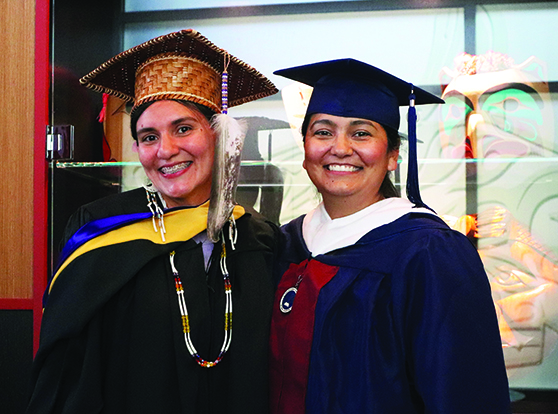
(M.A. from University of Arizona)
“There is such a sense of pride and accomplishment at these graduation banquets because, for many of our graduates, they are the first in their family to graduate college,” shared now-retired higher education specialist Jeanne Steffener. “We love to see so many choosing to continue their education to pursue a master’s degree or Ph.D. Their continued success motivates us as a department to do more outreach because we’re seeing more and more excel at the next level. Our graduates’ accomplishments are so superb and worth celebrating.”
The importance of recapturing the story about Native Americans and education requires telling it anew with bold new characters and captivating subplots. Unquestionably, it will take a new generation of Native storytellers with ancestral knowledge and progressive savviness to unapologetically express our shared cultural values in new ways built for the ever-connected, digital world. From this latest cohort of higher ed graduates, we can rest comfortably knowing they are intent on motivating and inspiring even more trailblazers among the next generation.
Tulalip Higher Education staff are eager to help new and returning students find their path to academic success. They can assist with FAFSA applications and finding scholarship opportunities, as well as simply reviewing the Tribe’s current policies regarding paying for college and other educational programs. For those Tulalip citizens feeling empowered to help reclaim our educated Native narrative, don’t hesitate to get in touch with Higher Education at (360) 716-4888 or email highered@tulaliptribes-nsn.gov.
Tulalip holds groundbreaking ceremony for residential treatment facility
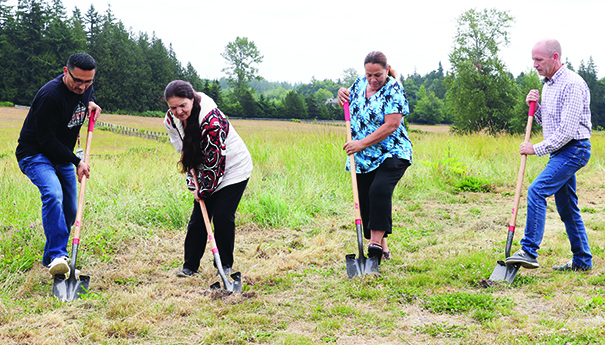
By Kalvin Valdillez, Tulalip News
The sound of bells rang out loud across an open grassy field as a group of Tulalip elders walked along its boundaries and offered a prayer through song. With the knowledge of all the important work that will soon take place on this particular plot of land, the elders engaged in a thorough ceremony and took extra care and time while performing the blessing.
It was cool, breezy, and overcast on the morning of July 7, while the elders conducted their spiritual work. A handful of tribal leaders observed the ceremony with open hearts and a feeling of optimism. The blessing served as the first step in a project organized by the state of Washington, Snohomish County, and the Tulalip Tribes. A project that provides a new hope for individuals throughout the county who are living with an addiction or battling mental health issues.
“We are the owner’s rep for the Tulalip Tribes, and we’ve been working on this project for a couple years now,” said Keith Banes, Project Executive of the Wenaha Group, which is a Native-owned construction management and consulting firm. “I want to applaud Tulalip leadership in investing in the communities. It impacts people, it treats whole people and families through this project. It’s a step to getting our communities healthy.”

After a five-year legal battle between the Tulalip Tribes, Snohomish County and Washington State pertaining to which governmental entity has the right to collect sales tax from businesses within Quil Ceda Village, the three parties agreed to a settlement in the winter of 2020. The terms were laid out and defined in a MOU between the Tribe, the County and the State.
The tax sharing compact ensured the Tribe would receive a portion of the sales tax collected from non-native retail shops at QCV, and as a stipulation Tulalip agreed to invest $35 million toward the construction of a civil commitment center, a resource desperately needed within the county.
The location for the behavioral health center is north of Stanwood’s city limits and adjacent to the tribe’s Healing Lodge. The property is owned by Tulalip, but the facility will be operated by the state. The residential treatment facility is projected to employ well over 50 people once the project is completed.
Broken down into two phases, the project will begin on the south end of the property with one building that will open up 16 beds, as well as the center’s parking lot and entryway. Phase two will begin after the first phase is completed and will bring in another facility on the north side, and an additional 16 beds will be made available to those individuals who are civilly committed.
Patients will be admitted to the treatment facility by way of a court order and can receive anywhere from six to twelve months of treatment, with the goal of slowly and safely reintegrating them back into their communities. Each facility will be approximately 15,500 square feet and will also be single story buildings.
A number of factors were considered throughout the planning process, such as traffic, water and sewage services, and the protection of nearby wetlands. Public hearings were held so that the local community could voice their opinions and concerns. The residential treatment facility was met with opposition from several Stanwood citizens who filed an appeal after a conditional use permit was granted for the project this past March. However, the Snohomish County Council upheld the original decision in favor of the project back in May.
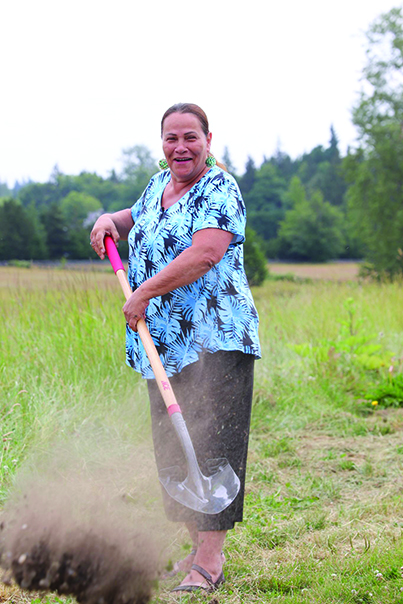
Immediately following the blessing of the land by the elders, Tulalip leaders held the official groundbreaking ceremony. With a shovel in hand, Tulalip Chairwoman Teri Gobin reflected on the project. She shared, “This project came to fruition due to our tax case. This was part of our tax settlement, that we would use one year of our taxes to build this facility, which is $35 million. It’s really going to be good for our people. We’ve already started to change our codes for those who are getting in trouble with the law, who have mental health and addiction issues. This will be a way to help them; start them on the right path to getting healthy again and getting their lives back on track. This project has been a long time coming and we’re excited that we’re at this point today and moving ahead in a good way.”
Opening up a total of 32 beds for in-patient treatment is a big deal as a study conducted in the spring of 2022, by the Washington State Health Care Authority, showed that there are only six beds currently open in the entire county for people to receive this type of treatment. Furthermore, Tulalip tribal members will have preference to a certain number of those 32 beds, and therefore, the facility will assist in the wellbeing and sobriety for tribal members in the coming years.
Tulalip’s Interim COO, Sam Davis, expressed, “I have been fortunate enough to be a part of something so special. Being on the frontlines of this and understanding and seeing the importance of these facilities, doing outreach work in our community and at the homeless camps and on the streets, you understand the true need of a facility of this magnitude. A lot of our people do have mental health issues and get into addiction too. And when we go to help somebody, and there’s nowhere for them to go because they’re at that stage where the hospitals don’t want to take them, this is that facility that we can bring them to. And it’s not just a Tulalip issue, it’s an issue all over our country, our state, and our county. This is going to do amazing work for our people – growing those individuals, teaching them and guiding them how to be productive citizens again, giving them the tools to get a job and take care of their kids.”
According to Keith, construction for phase one is set to begin on July 17, which will help bring the community another step closer to healing. For additional information, please visit the planning and development page at www.snohomishcountywa.gov.
3 Drew Hallam
July 10, 1990 – July 5, 2023
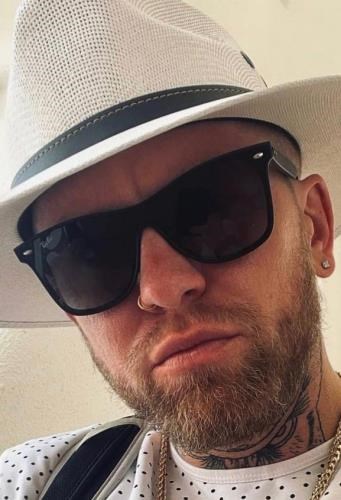
Drew Hallam was born July 10, 1990 in Everett Washington to Cathy Wood and Duane Hallam. He passed away July 5, 2023 in a tragic car accident.
He grew up in Mount Vernon, Washington with a passion for competition and adrenaline. He became a fierce athlete and a strong teammate. His love for sports continued into his adulthood where he continued in CSSA softball with his NA family. If he wasn’t on the field or the court, he was instilling his love for sports in his son Kieran.
Kieran became Drew’s proudest accomplishment, he showed him the fundamentals of each sport. Watching his son become as fierce a competitor as himself was the highlight of his life.
Drew loved his family deeply. He had a talent to leave an imprint on all he came across in life. He was also kind and generous to anyone he met. There wasn’t anything he wouldn’t do for those he loved.
It’s no surprise that Drew found a career as an arborist, and from the start exceled in the field. He mastered his craft and became an expert who thrived in the most difficult of situations and removals. No tree was too tall and no job to extreme.
He will be missed.
Drew leaves behind his son Kieran Hallam, mother Cathy Wood, father Duane Hallam, brother Brian (Kylie) Hallam, his brother in life Danial (Angel) Osburn, grandmother Sandie Markle, grandfather Harry Alexander, aunts and uncles Stacy Alexander, Corrine Markle, Nancy Hallam Caudill, Gene Hallam, niece Adaline Hallam and numerous cousins.
Service will be held on Tuesday July 11th at 10:00 A.M at the Tulalip Tribal Gathering Hall at 7512 Totem Beach Rd. Tulalip, Washington 98271, with burial following at Mission Beach Cemetery.
Memorial flowers to be sent to Tribal Gathering Hall.
Aggravated Assault Arrest-Boom City
Boom City: We are all family out here
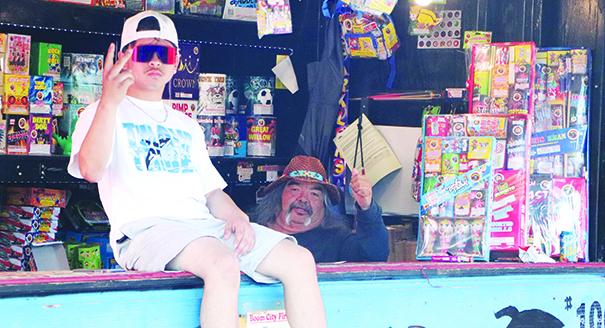
By Wade Sheldon, Tulalip News
A loud explosion shakes the ground followed by a rapturous cheer from the many onlookers who are there to sell and buy fireworks. Boom City is a glorious aspect of Tulalip tradition wrapped inside indelible interactions. People from all around come to the infamous firework haven in Tulalip, Washington to gather their needs and wants for the Fourth of July.

Tulalip tribal members from all facets of life try their skills at selling fireworks. From seasonal workers like fisherman and teachers, to police officers, construction workers, and people with desk jobs, all take to the lot behind the Tulalip Casino for a chance at creating some revenue.
“Every year, I never count the money until the end. If I look up and there’s still fireworks on the shelf then that tells me I need to keep selling,” said Tony Hatch, Tulalip tribal member and owner of The Family Packs stand. “All I want is to be able to pay my mortgage for a month and pay my workers plus take my family out for a great meal like steak and lobster, followed by a movie. If I can do that then it has been a good season.”

One of the main aspects of Boom City is the coming together of family and friends. Scott Rehaume, stand assistant for firework retailer Up in Smoke, stated, “We are all family out here!” An emphasis repeated during the firework season, as compatriots help with heavy lifting, watching other’s stands so they can use the restroom or get food, and looking after each other’s kids as they run around from stand to stand visiting with different relatives.
Tribal member and stand owner Eliza Davis spoke on the many benefits the youth have by participating in the business of selling fireworks. “Boom City gives them an inside glimpse on what it takes to run a business. They learn about procurement, accounting, they learn about just being a hard worker. It’s not always easy to get up and go down there but you push through. It’s really good practical skills that will serve them in their lives.”

“I think that it helps the kids get out of the box. It pushes them to be more open and build their confidence,” Scott voiced as he watched his nephew help a customer. “When we show our youth that they can do more it helps them grow.”
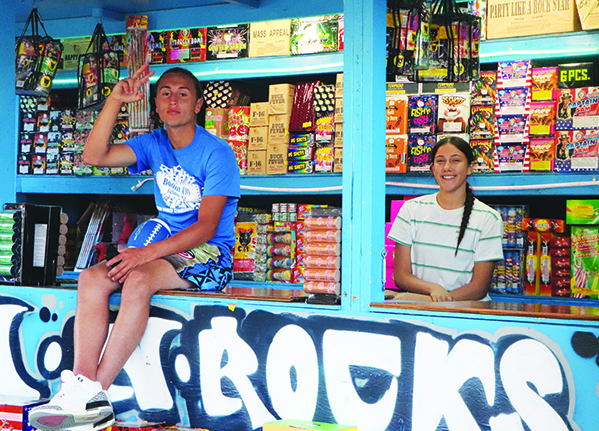
While you’re at Boom City, friendships can sprout out of anywhere. “I like meeting new people all the time, and to make friends with them, that’s kind of the most fun for me.” said Jon Moses, tribal member and worker for the Monty Hall stand. “I like giving all these kids a thrill when they get their fireworks. You can see the excitement in their eyes.”
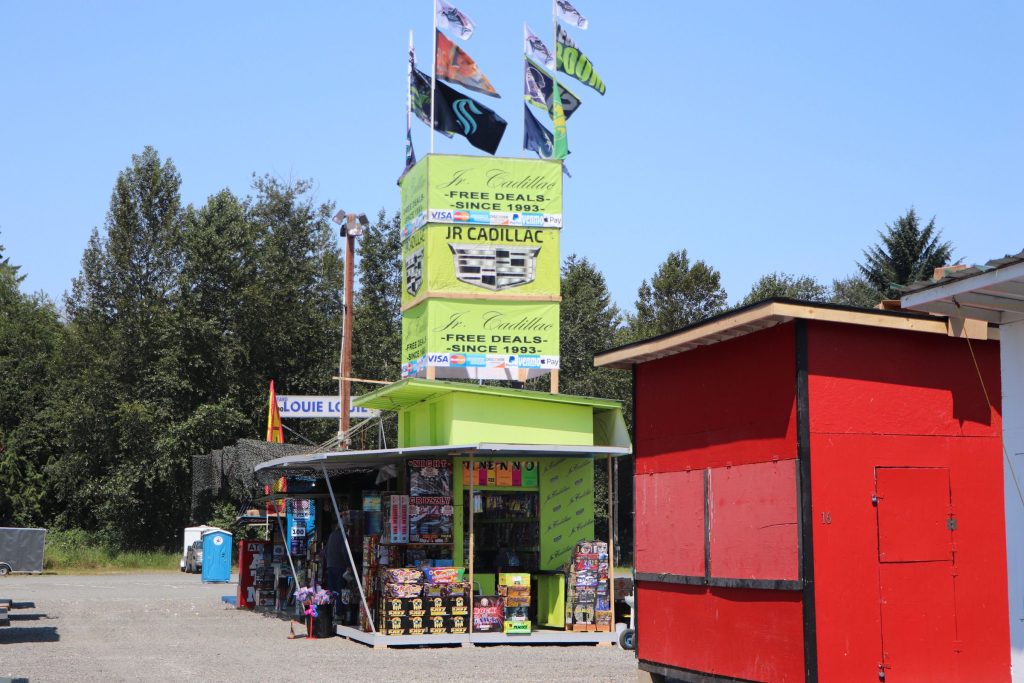
For many stand owners all the lifting, pulling, and staying on your feet begin to slow them down as the Fourth comes near. When asked what they look forward to at after closing, tribal member and stand owner of The Price is Right, Nik-Ko-Te St. Onge said, “Going home, hanging out with my family and having a firework show.” One of many traditions stand owners like to do after selling fireworks for the Boom City season.
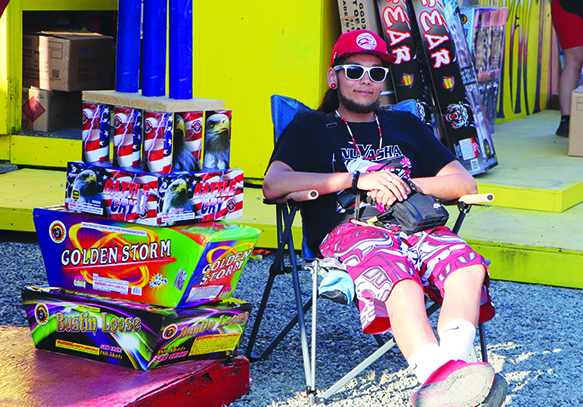
“Everybody needs to celebrate the Fourth of July,” Tony smiled and remarked, as a thunderous bang filled the air. “What’s a barbeque without fireworks on the Fourth!”
Boom City is open from 6:00am to 12:00am 7 days a week until July 4th and is located behind the Tulalip Resort and Casino, 10274 27th Ave NE, Tulalip WA.
Passing down knowledge at annual clambake
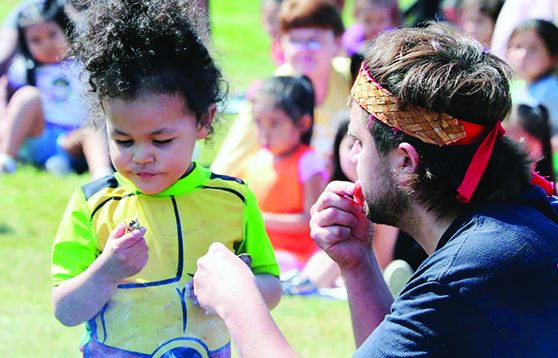
By Kalvin Valdillez, Tulalip News
“Long time ago, my grandparents and their grandparents, used to get all of our foods from the water – crabs, fish, and clams,” said Tulalip cultural bearer, Ray Fryberg. “We used to live in longhouses, and there were ways that we used to cook. We didn’t have frying pans, pots, and different things. This is the old way that we used to cook clams, this is called a clambake.”
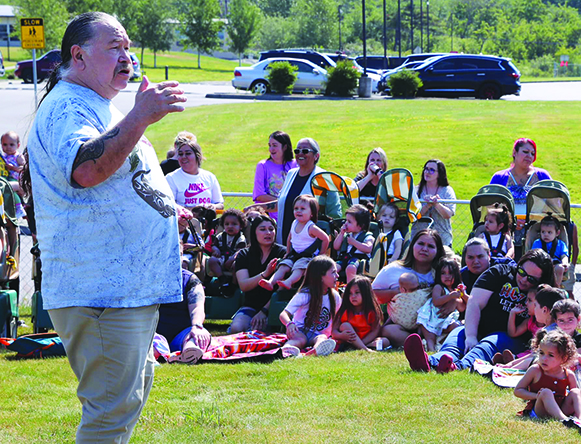
Smoke rose into the air from the Betty J. Taylor Early Learning Academy (TELA) parking lot on the morning of June 23. Tulalip tribal members, Thomas and Andy Williams, were hard at work tending to a smoldering cinder block pit at the small field that overlooks Tulalip bay.
At the center of the pit were hundreds of clams, tightly wrapped in foliage. And the aroma of a traditional meal, now a staple PNW appetizer, carried into the breeze over the campus of the academy.
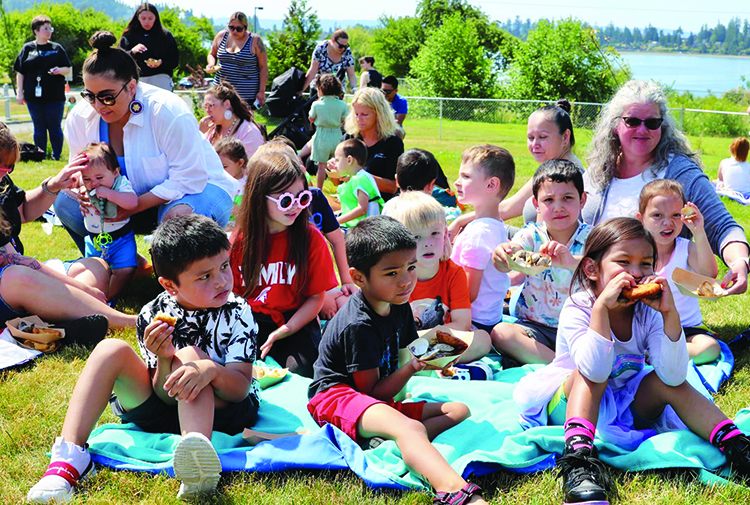
“Traditionally, our elders used to say when the tide goes out, the table is set,” explained TELA Director, Sheryl Fryberg. “That’s how we got our clams, our crab. To do this traditionally, this kind of clambake, we use skunk cabbage, thimbleberry leaves, and kelp so that it seals in the flavors. It’s so heartwarming that we have people who still remember the traditional ways and can pass it down. For our kids, who are birth to five, these are the most important teaching years of their lives. And we want to lay that foundation for them so wherever they go in life, they know who they are.”
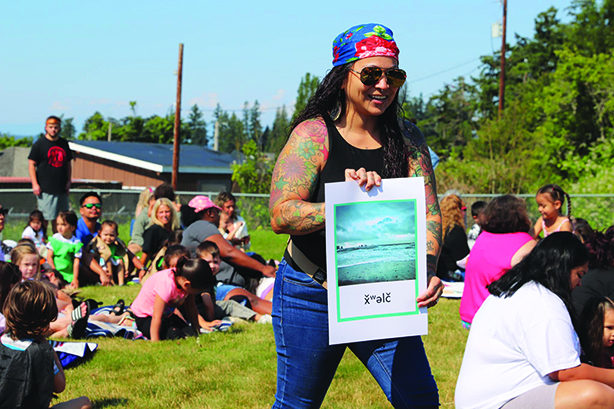
The students gathered around and watched the coastal chefs at work while enjoying the summer weather, soaking up both sunshine and ancestral knowledge. Lushootseed Language Warrior, Natosha Gobin, greeted the children, and together they exchanged dialogue and shared songs in the traditional sduhubš language.
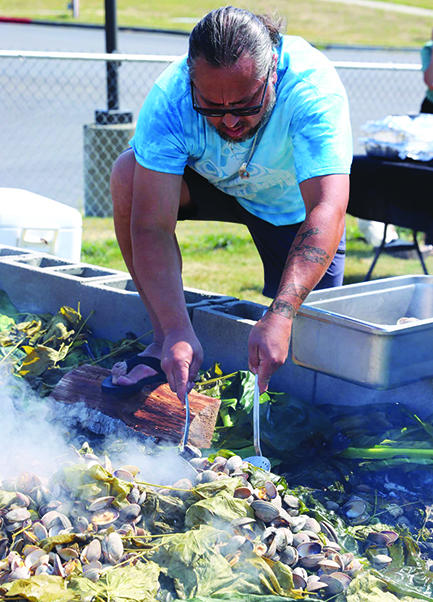
The annual clambake is a joint event hosted by both TELA and the Lushootseed department. Over the years, the two departments have forged a strong relationship. Working together, they have developed and implemented an immersion program that introduces the ancestral language to tribal members at a young age, during the critical era of a child’s brain development. Each school day, Lushootseed language warriors visit the academy’s classrooms to impart traditional words, phrases, songs, and stories to the kids, ensuring that the language revitalization continues to thrive generations from now.
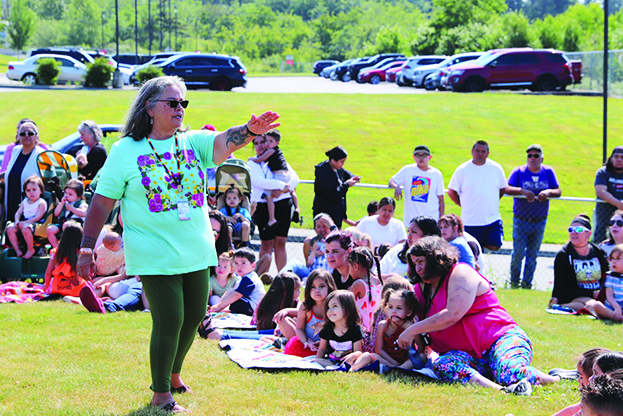
Ray, who passed the cooking techniques down to Thomas and Andy, spoke to the kids about the importance of sharing Tulalip’s teachings with the next generation, so the tribe’s lifeways are carried on into the future.
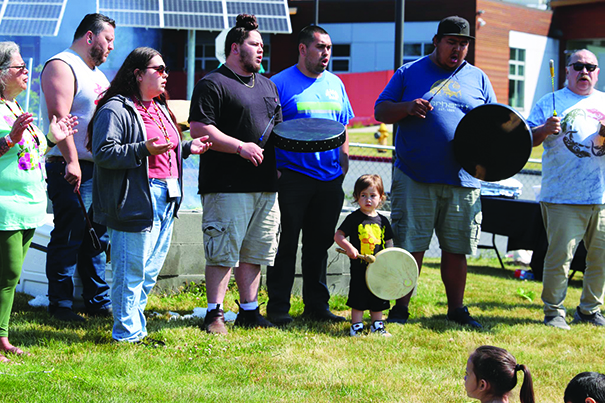
Said Ray, “My nephews are going to share with you the way we used to cook. This is called steaming. This is something that belongs to us. We must never forget those ways that were given to us. The way we lived a long time ago, and the way we prepare and cook our foods.”
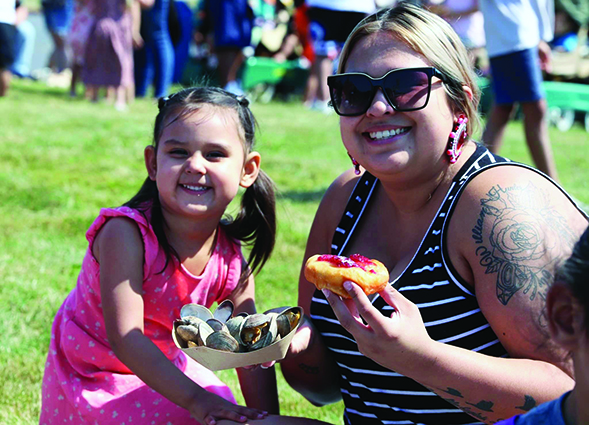
While the clams continued to bake, Ray called upon his family to share a song. Many TELA students joined in by either drumming and singing or dancing alongside their friends and teachers. Following the song, Lushootseed Language Warrior, Lois Landgrebe, drew the attention of the kiddos by sharing a traditional and interactive story about clams and their importance to the Tulalip people.
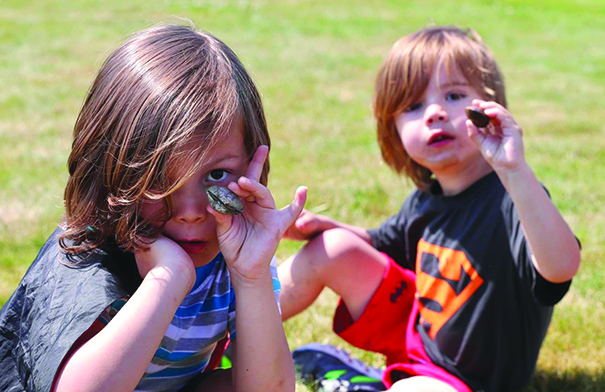
As soon as the clams were ready, they were uncovered and scooped out of the pit. Each student received their own tray of clams, which was accompanied by frybread, and they grubbed down on the shellfish with their peers, teachers, and families.
The kiddos were not only excited to eat the delectable and traditional food, but also found amusement in the shells by opening and closing them to make it appear as if the clams were talking.
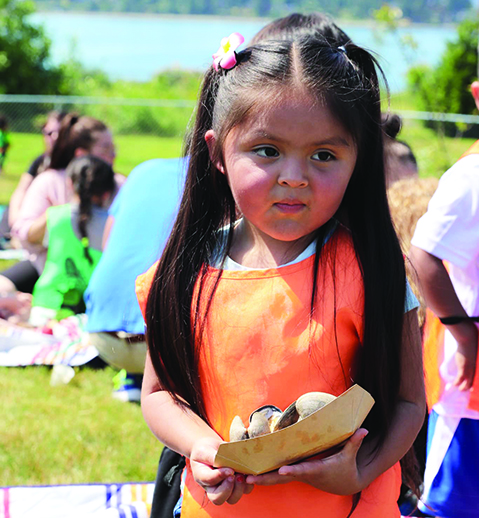
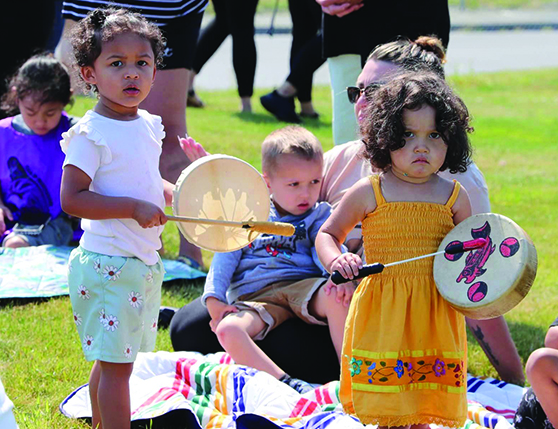
Before dashing off to the serving station to request seconds, a young student exclaimed, “The clams are so yummy, I already ate all mine. I need more!”
“It’s so beautiful, and it’s the cutest thing,” shared Sheryl when watching the students enjoy their clams. “Some of them have never seen this before or had clams prepared this way. Because they are being exposed to this now, they are going to grow up knowing that this is our way and know that this is where they come from. You could see the joy on their faces. We had over 100 kids out here singing and enjoying the day. Hearing the whole school singing songs that they’re learning from Lushootseed was amazing. When the kids are doing these traditional things, they are learning how to be.”
Hard work pays off for Heritage Graduates
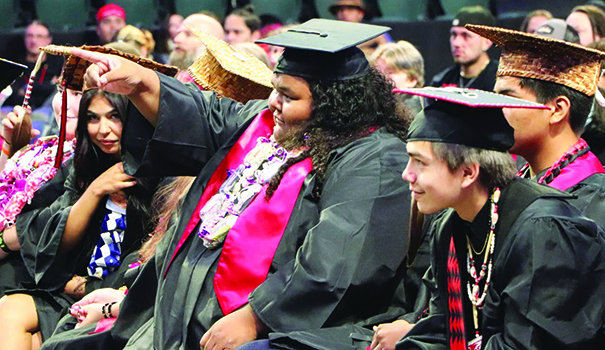
By Wade Sheldon, Tulalip News
The atmosphere was charged with anticipation as the graduating class of 2023 from Tulalip Heritage High School eagerly awaited their well-deserved high school diplomas. After countless hours of arduous studying, unwavering commitment, and unyielding dedication, the moment of triumph had arrived. Principal Nathan Plummer took charge, gathering the students for a final practice walk, ensuring they were fully prepared before the seats filled with family members and friends, who eagerly anticipated this joyous occasion.
Sounds of steel drums filled the air as a musical collaboration between the Tulalip Elementary and Heritage High schools kicked off the event. As the music faded away principal Plummer stepped forward to address the graduates and families. “Welcome students, communities, and families, to the graduation ceremony of the first ever Indigenous Big Picture Learning class of the 2023, Tulalip Heritage High school.”
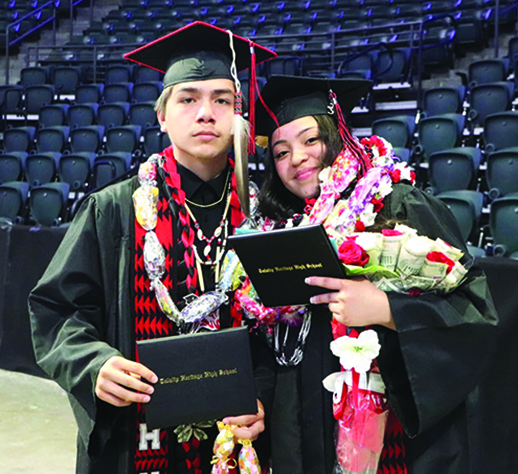
Special guest Armando Ortiz, of the Native American Initiative Big Picture Learning, presented an award to Devon Johnson, Heritage A.S.B nominated speaker, who had this to say, “we made it through the big shift, into the big picture, where we had to adapt to a new way of learning. Whether we benefitted from it or not, we did go through more than enough to say we definitely grew along the way.”
As speeches wrapped up, graduates looked to the principal with anticipation of receiving their diploma. The crowd cheered and with every student called, family and friends would yell out the name of the graduate as they walked across the stage. Smiles filled the arena as parents took in the momentous occasion.
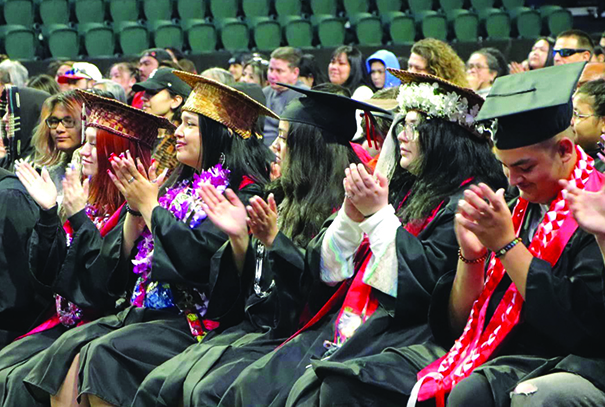
“It feels amazing. It feels like all that hard work staying up late to get your work done, all of that, just pays off, man. As soon as you walk across that stage you feel accomplished,” said Antonio Flores-Howlett of the 2023 graduating class. “I’m looking forward to starting my adult life. I’m looking forward to getting a job, learning how to invest my money smart, and making smart moves with the money I’m getting.”
When asked what kids just starting high school should know? Antonio remarked, “Stay on top of your grades and do extra work. Try running start if you want the best future possible. If you want a stable future, pass all your classes!”
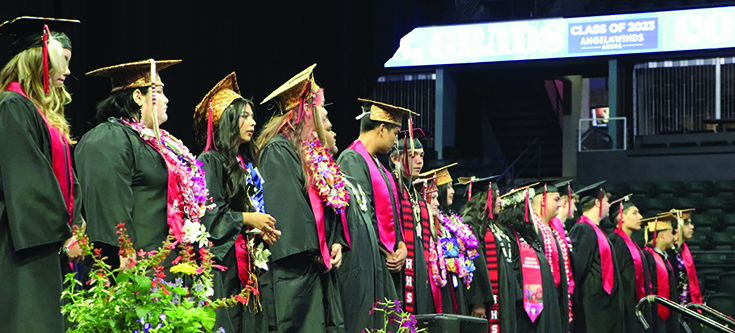
Relatives gathered around their graduates as the event was ending. “It feels very exciting,” said Markus Hatch of the 2023 graduating class, “I feel full of happiness and joy; it’s great.” Then he shared his plans for summer. “I’m looking forward to lots of relaxation, sleeping in, enjoying great food, and the heat.” His tips for new high school students was, “It gets better, it may be rough at first, enjoy it, enjoy it all!”
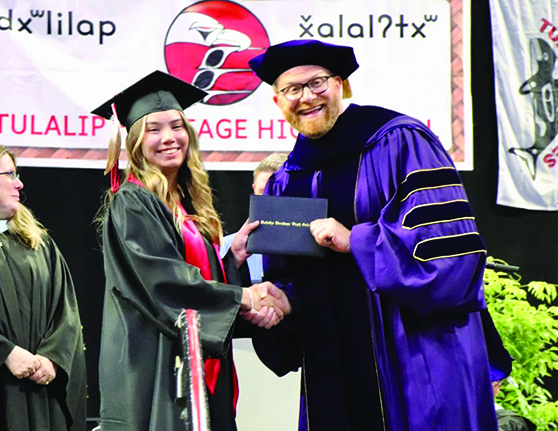
With the culmination of their high school journey, the graduating class of 2023 from Heritage steps onto the threshold of their next chapter in life. A world of boundless possibilities lies ahead. Equipped with the knowledge and experiences gained, this class sets out to craft their own narratives, leaving an everlasting impact on the world they encounter.
Determination and a Diploma
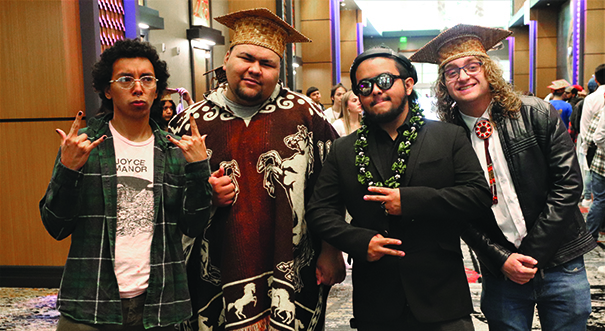
By Micheal Rios, Tulalip News
“Welcome to our 2023 ceremony to celebrate our graduates,” said interim CEO Rochelle Lubbers as she greeted the hundreds of family and friends who ventured to the Tulalip Resort on June 20. “We’re so excited to have you all here. Our hearts are beyond full to be in the same room with our community on such a remarkable occasion.
“Reflecting on all our beautiful students today, I thought about all the different journeys they have taken to get here and how each journey is unique and special. Not a single one had the same walk, but there are some commonalities that they experienced being seniors during a global pandemic. They experienced distance learning and all the challenges with technology that came with that. However, what I’m most impressed with is that they exemplified determination. Our students overcame these challenges and pushed through in whatever way they had to in order to graduate. For that, their entire Tribe is proud of them, and that’s why we’re here to celebrate their wonderful accomplishment.”
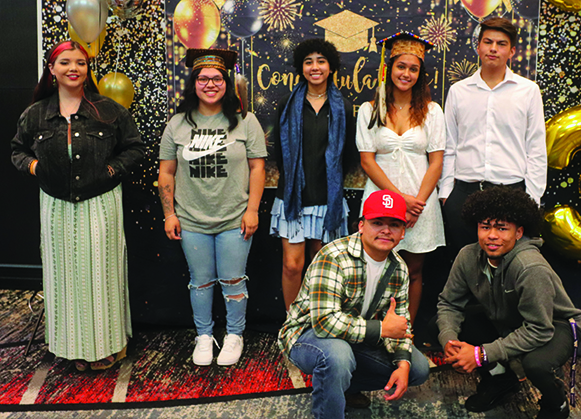
The triumphant atmosphere was profound in the Resort’s Orca Ballroom as the optimistic hopes and limitless dreams of the Class of 2023 took center stage with a stylish graduation banquet.
A whopping sixty-four high school grads, accompanied by their loved ones, convened to commemorate the rite of passage. There were traditional songs sung and drummed, a catered buffet-style dinner, opportunities to immortalize the occasion with a visit to an on-site photo booth, and plenty of motivational words offered by tribal leaders.
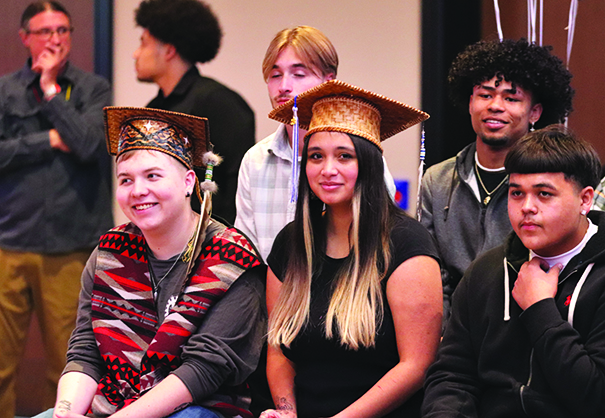
“We couldn’t be more amazed at how resilient this generation is,” said executive director of education Jessica Bustad. “No matter what the challenge, you guys show up and prove over and over again your willingness to adapt and move forward. We’re so excited to see where you go with your future. All of us within the Education Division want to see each of you succeed. We want you to be happy and healthy adults that are serving your community and loving your families. Whether you knew it or not, you’ve been actively reclaiming and revitalizing what education means to our people. So no matter where your destination is from here, I want you never to forget that your accomplishment honors all Indigenous people.”
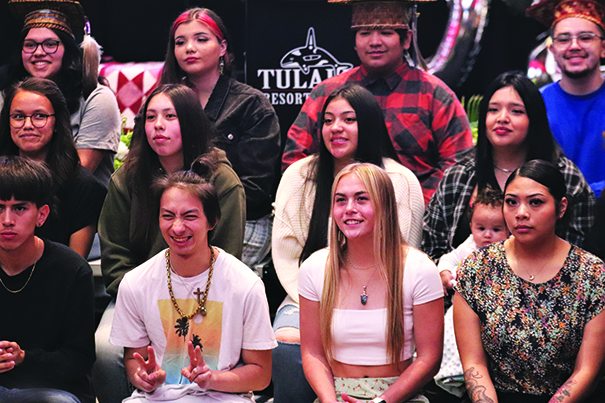
One emphatic message that was repeated throughout the night from graduates, parents, and elders alike was a reminder to the praise-worthy 18-year-olds that receiving a high school diploma is just the first major milestone on their journey to manifesting their dreams into reality.
For some, the dream may be finding a convenient job to establish independence via a one-bedroom apartment, or joining the Tribe’s next TERO vocational training center class in order to enter the construction trades and start building up a pension as a teenager. Of course, there are those newly minted adults eager to start a family of their own. Plus, a few individuals who never thought they’d graduate high school and, now having achieved the seemingly impossible, are searching for their next step.
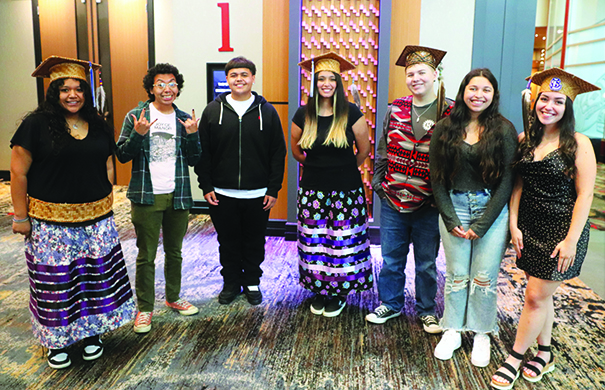
Then there are the awe-inspiring dream chasers. These types of high school grads aren’t satisfied with just one diploma. They want more; more education, more diplomas, and more experiences than what can be found within the boundaries of the Reservation or Snohomish County. These individuals intend to redefine the expectations of success pertaining to Native Americans and the education system.
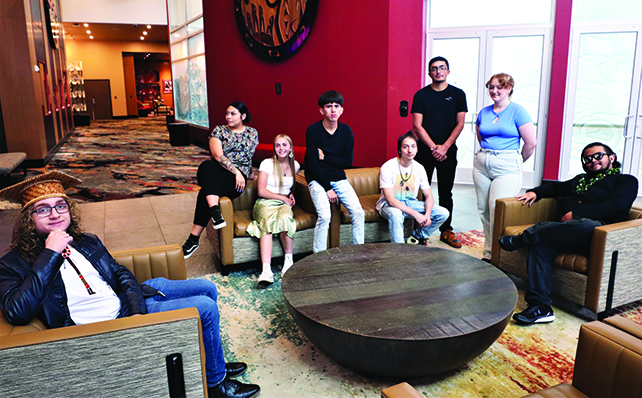
Tulalip citizens Sophia Rosen and Nolan Hegnes embody the dream chaser spirit, and for their impressive body of work accomplished over the past four years, they each earned the coveted title of Student of the Year.
Sophia, Senior Girl of the Year, was described by her Lake Stevens High School educators as sweet, welcoming, capable, trusting, and always going above and beyond. She was also characterized as accountable, trustworthy, and prompt. The Tulalip teenager persevered through mental health struggles her junior year, resulting in a deeper connection with school staff on her healing journey. On her road to graduating with a 3.2 grade point average, she was on the varsity cheer squad, expanded her studies through the Running Start program, attended Leadership classes, and tutored her peers. In the fall, she will proudly attend the University of Washington as a pre-science major.
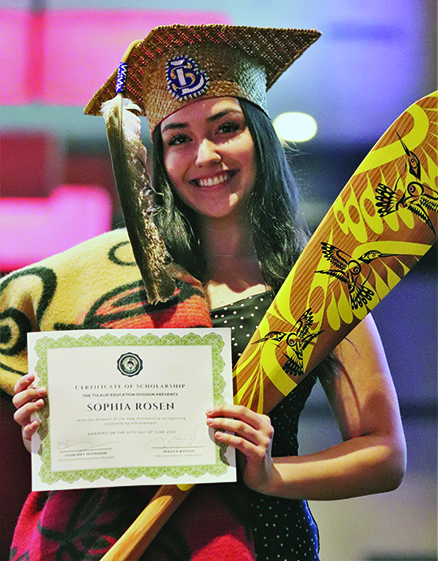
“My grandma Benita always made sure I knew of the resources the Tribe makes available for us and to utilize as much as I could. Something as simple as the tutoring program made a significant difference for me because I went to a very large public school where one-on-one time with the teachers wasn’t practical. By utilizing the Tribe’s tutoring program, I received the help and support I needed to feel confident in all my classes,” shared Sophia.
“My advice to all our younger Tulalip students or really any Native American youth is there is no one you can work harder for than yourself,” she added. “You shouldn’t feel less motivated to achieve great things in school or excel in the classroom because of the stigma around being a good student or being stereotyped because of where you live or what family you come from.”
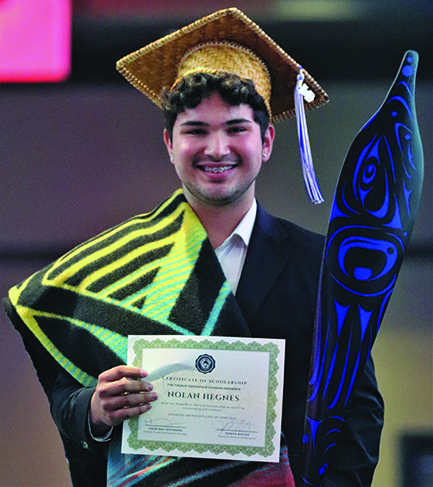
Meanwhile Nolan, Senior Boy of the Year, attended Grace Academy for the last twelve years and maintained a stellar 3.85 G.P.A. He represents Tulalip as the only Native American in his graduating class. Nolan holds a black belt in Kung Fu, mentors his younger Kung Fu peers, and has shown leadership and mentorship skills working with children in our community. Most noticeably, he’s excelled on the golf course, whether on his high school golf team or in the Boys & Girls Club charity tournament. He’s participated in the National Honor Society since 10th grade, wherein he dedicated himself to maintaining his high academic standing and sought to give back to his tribe by volunteering at the Boys & Girls Club.
Nolan’s mentors said his best attributes are his tremendous character, excellent teamwork ability, calm demeanor, and always respectful attitude. He’s been accepted into Arizona State University, where he’ll be pursuing a degree in architecture.
“My parents have always instilled in me and my sister that education is everything,” said Nolan. “I have countless memories of my father reminding me that ‘no one can ever take away your education’. I’ve taken this lesson to heart and feel like by getting the most education I can, then it not only benefits me but my family and community as well. We are so fortunate as Tulalip tribal members to have the financial support to pay for our schooling. It’s such a great thing. I do my best always to remember that so many don’t have the opportunity that we do to have school paid for, and it motivates me to dream bigger, too. With the support of my family and tribe, I intend to become Tulalip’s first architect.”
Becoming leaders of the present may seem daunting to most young adults who have grown accustomed to daily consistency and certain comfort levels provided by the modern educational structure. However, these Native youth have been bucking the trend and blazing new paths to academic success without realizing it. They’ve outperformed long-held stigmas about Native Americans and school systems, they’ve overcome the odds that stated they wouldn’t earn a high school diploma, and all the while, they broke down barriers that prevented previous generations from attending college.
For our students, their ability to thrive in the westernized school system not built for them and still be able to excel and graduate with notoriety means not only proving the doubters wrong, but proving their ancestors right. The right for future generations to be educated and be given the opportunity to pursue a Bachelor, Master or Doctorate degree was something previous tribal leaders fought and even sacrificed for. Their vision comes true every time an Indigenous citizen boldly ventures off to a University equipped with the strength of culture and a tribe’s worth of support.
The annual graduation banquet culminated in a ballroom’s worth of support hoots and hollers as each graduate strutted down the red carpet to a podium where education staff and school district representatives awaited them. Each inspired Native was given congratulatory handshakes, hugs, and a stunning Pendleton travel bag as a graduation gift.
